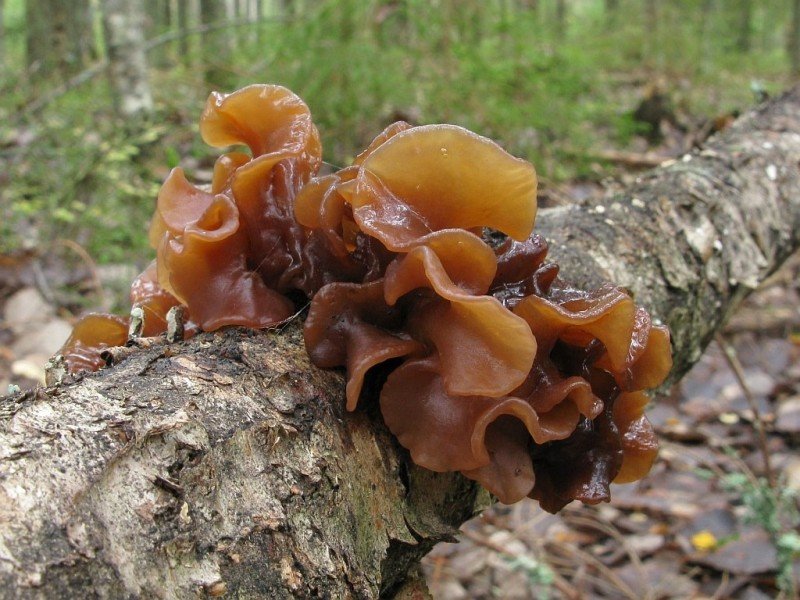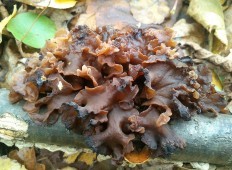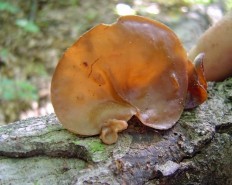Hevitra ato Anatiny
Trembling leafy (Phaeotremella foliacea)
- Diviziona: Basidiomycota (Basidiomycetes)
- Fizarana: Agaricomycotina (Agaricomycetes)
- Kilasy: Tremellomycetes (Tremellomycetes)
- Kilasy: Tremellomycetidae (Tremellomycetidae)
- Karazana: Tremellales (Tremellales)
- Fianakaviana: Tremellaceae (mangovitra)
- Karazana: Phaeotremella (Feotremella)
- Type: Phaeotremella foliacea (Phaeotremella foliacea)
- Trembling fringed
- Tremella foliacea
- Gyraria foliacea
- Naematelia foliacea
- Ulocolla foliacea
- Exidia foliacea

Vatana voankazo: 5-15 centimeters and more, the shape is varied, may be regular, from spherical to pillow-shaped, may be irregular, depending on growth conditions. The body of the fungus consists of a mass of leaf-like formations fused with a common base; in young specimens, until they have lost their elasticity, they give the impression of “ruffled” thin scallops.
The surface is oily-moist in damp weather, remains moist for a long time in dry periods, when dried, individual petals wrinkle in different ways, so that the shape of the fruiting body is constantly changing.
Color: brownish, brownish burgundy to cinnamon brown, darker in age. When dried, they can acquire a slight purple hue, later darken to almost black.
pulp: translucent, gelatinous, elastic. When the fruiting body ages in wet weather, the “petals” from which the fungus is formed lose their elasticity and shape, and become brittle in dry weather.
fofona sy tsiroc: no particular taste or smell, sometimes described as “mild”.
The spore-bearing layer is located over the entire surface.
Spores: 7-8,5 x 6-8,5 µm, subglobose to oval, smooth, non-amyloid.
Spore Powder: Cream to pale yellowish.
Trembling foliose parasitizes other mushrooms of the species Stereum (Stereum) growing on conifers, for example, Stereum sanguinolentum (Redish Stereum). Therefore, you can find Phaeotremella foliacea only on coniferous trees (stumps, large fallen trees).
Widely distributed in Eurasia, America. The fungus can be found at different times of the year in varying degrees of growth or death, as the fruiting bodies persist for a long time.
The mushroom is probably not poisonous, but its palatability is so low that the question of preparation is not particularly considered.

Ravina mangovitra (Phaeotremella frondosa)
It lives exclusively on deciduous species, as it parasitizes stereoma species attached to deciduous.

Auricularia ear-shaped (Judas ear) (Auricularia auricula-judae)
Differs in the form of fruiting bodies.

Curly Sparassis (Sparassis crispa)
It has a much firmer texture, is tan rather than brown in color, and usually grows at the base of conifers rather than directly on the wood.









